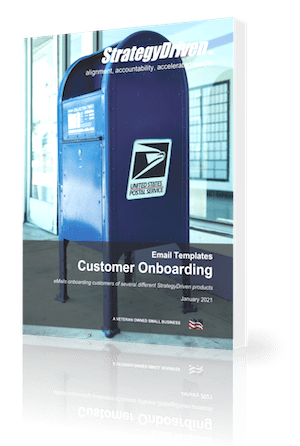6 Tips to Avoid Issues During Your Commercial Move
Relocating a business is a monumental task that requires meticulous planning and execution. The city of Frederick, with its vibrant community of over 3,700 businesses and world-class facilities, serves as a testament to the dynamic nature of commercial enterprises. Businesses in such thriving environments often face the need to move, whether for expansion, to tap into new markets, or to enhance operational efficiency. However, a commercial move is fraught with challenges, from minimizing downtime to ensuring the seamless transfer of essential services and equipment. Without proper planning, businesses risk operational disruptions, financial losses, and a negative impact on customer relations.
The following tips aim to equip businesses with the knowledge to execute a smooth transition to their new premises.
1. Plan Your Move Well in Advance
The key to a successful commercial move lies in early and thorough planning. Initiating the planning process several months ahead of the move allows businesses to outline a detailed moving strategy, assign tasks, and set realistic deadlines. This phase should involve all stakeholders, including department heads and team leaders, to ensure every aspect of the move is covered, from logistical arrangements to employee relocation support.
An effective plan also involves regular progress check-ins and flexibility to adjust timelines as needed. By planning well in advance, businesses can anticipate potential challenges and develop solutions before they escalate into major issues, ensuring a smoother transition with minimal impact on operations.
2. Choose the Right Moving Company
Selecting a moving company with expertise in commercial relocations is critical to the success of your move. The right mover not only provides the logistical muscle needed to transport equipment and furniture but also understands the nuances of commercial moves, including the importance of minimizing downtime and handling sensitive equipment with care.
Incorporating reputable Frederick movers into your moving plan can significantly reduce the stress and complexity of relocating a business. These professionals offer valuable insights and services tailored to meet the specific needs of businesses in Frederick. Their experience in managing commercial moves ensures that your assets are transported safely and efficiently, allowing you to resume operations as quickly as possible in your new location.
3. Inventory and Label Everything
A comprehensive inventory of all items to be moved is indispensable for keeping track of your assets and ensuring nothing is lost or misplaced during the move. This process involves cataloging equipment, furniture, documents, and any other items belonging to the business. Assigning a unique identifier or label to each item or box further streamlines the unpacking and setup process at the new location, saving time and reducing confusion.
Effective inventory management also aids in identifying items that may require special handling, storage, or insurance coverage during the move. By meticulously labeling everything, businesses can facilitate a more organized and efficient relocation process, ensuring that all assets are accounted for and properly set up in the new premises.
4. IT and Telecommunications Setup
One of the most critical aspects of a commercial move involves ensuring that your IT and telecommunications systems are transferred smoothly and become operational with minimal downtime. Early coordination with your IT department or service providers is crucial for planning the disassembly, safe transport, and reinstallation of computers, servers, phone systems, and other technology infrastructure. Preparing for this setup includes ensuring internet connectivity and proper networking in your new location ahead of the move. This step is vital for businesses to maintain continuous operations, client communications, and internal workflows without significant interruptions.
Moreover, it might be beneficial to use the move as an opportunity to upgrade any outdated equipment or software. Modernizing your IT infrastructure can enhance efficiency and productivity in your new space, providing long-term benefits that outweigh the initial costs and efforts.
5. Communicate With Your Team and Clients
Effective communication is paramount during a commercial move. Keeping your employees informed and involved helps not only ease the transition but also maintain morale and productivity. Clear communication ensures that every team member understands their role in the move and how it will affect their work. Regular updates, meetings, or a dedicated internal webpage about the move can be effective ways to keep everyone on the same page.
Equally important is communicating with your clients about your move. Informing them of any changes in location, potential disruptions, or modified operating hours helps manage expectations and maintain trust. Effective external communication can be facilitated through email updates, social media posts, or notices on your company’s website.
6. Plan for the Unexpected
Even the most carefully laid plans for a commercial move can run into unforeseen challenges. No matter how detailed your checklist is, there’s always a possibility of encountering situations that can throw a wrench in your operations. These can range from delays due to logistical issues or unexpected equipment damage during transit to sudden operational needs that arise at your new location. The unpredictability of moving, especially on a commercial scale, necessitates having robust contingency plans in place.
The first step in planning for the unexpected is acknowledging that these challenges can occur. This mindset shift allows for the creation of flexible strategies that can adapt to changing circumstances. For example, building extra time into your move schedule can accommodate unforeseen delays, ensuring that minor setbacks don’t escalate into major disruptions. Similarly, it’s wise to designate a portion of your moving budget for emergency expenses. This financial cushion can cover unexpected costs without jeopardizing the overall financial stability of the move.
Conclusion
A commercial move is a significant undertaking that requires careful planning and execution. By prioritizing early planning, selecting the right moving company, meticulously inventorying and labeling items, ensuring a seamless IT and telecommunications setup, maintaining open lines of communication, and preparing for the unexpected, businesses can navigate the complexities of a move with confidence. Each of these steps plays a crucial role in minimizing downtime and ensuring a smooth transition to your new commercial space. With the right approach and preparation, your business can emerge from the moving process stronger, more efficient, and better positioned for future success.














Leave a Reply
Want to join the discussion?Feel free to contribute!